We did get very high in Ecuador’s capital Quíto, my oh my! 2,850 metres above the sea level. That makes Quito the second-highest capital in the world, right after La Paz in Bolivia (3,640m). But Bolivia cheated with the title, because they have several capitals (I see, how convenient!). There. Team Quito.
The altitude
If you were disappointed about me not keeping up with vague drug references I might have made in the title: not so fast! Because this is some serious altitude we’re talking here, and it does have a few funky effects. In fact, it is recommended that you ease into the altitude, and go up gradually.
This is of course not always possible, for example when you’re flying into the country. We did both: once we came up from the coast with a bus (and up it is; up, up, up!) and the other time we flew in with a plane. In our case there wasn’t a big difference. We definitely always felt the altitude, but we never had any serious problems because of it.
In fact, it was quite an adventure: there’s less oxygen in the air, and boy, going up a tiny flight of stairs feels like climbing Mount Everest. I constantly felt like I had just worked out and was very proud of myself. Oh yeah, that’s the other side effect: feeling a bit dopey. Hence I failed to acknowledge that going up ten steps of stairs is not really a massive achievement. So I might have been mistaken, but I was happy. Yay altitude.
Another great thing about the altitude is that you can blame everything on it. Which we did. Extensively. A bit of a headache? “Must be the altitude!”. Thirsty all the time? “That’s the altitude!”. Feeling a bit nauseous? “It’s the altitude!”. Dry lips, eyes, throat, skin? “Ugh! That altitude!”. Discovered a pimple? “Oh altitude!”. Running into a lamp post? “Because… the altitude!”.
All in all, it actually just means that you feel a bit “off”, and you want to make sure to keep well hydrated and to listen to your body when it tells you to take it easy.
So we pretty much moved about like snails. Slightly confused snails. We couldn’t walk as fast as we normally do, we needed double the time to achieve anything, we had a bit of a difficulty concentrating. Which was probably a blessing in Loz’s case, because due to his luggage getting lost, we had to check out all of Quito’s shopping centres for partially quite specific replacements. And Loz does not enjoy shopping.
Although it wasn’t too bad, because we mainly went to outdoor and technic shops. At least we can now totally recommend the shopping experience in Quito – the malls are really nice!
Safety
But usually mall-hopping is not on our list when we come to a new place, and sure thing, we had some time left to check out a few of the sights Quito has to offer. Which brings us to the next point: Quito does not have a reputation for being a very safe city. So we were not only dazed and confused snails wandering around, but also slightly paranoid snails. Best combination, really.
We were told to be careful with our belongings, and put them away safely (for example no wallet in your back pocket). This included that we should only take our cameras out when we wanted to take a picture – nothing valuable should be on display. Furthermore we were advised to not use public transport. While overland busses are okay, inner-city busses have a reputation to apparently mainly carry pickpockets. So we walked (we were pretty much in the city centre, which was walkable), or took a cab (which are not as easy to flag down as you would have thought) – it’s affordable.
Last but not least, we heard that we shouldn’t be out after dark – which really is not much of a problem, because Loz usually needs to go to bed by 7pm. …I kid, I kid, it’s 8pm… We did pretty well on that, apart from two naughty exceptions where we stayed out til 10pm (gasp!). Yes, I know, crazy.
But although I’m making a bit of fun of the situation here, and we did not experience any inconvenience of this sort during our three months in Ecuador, we took the advice serious. You see, you will always be warned about major cities, pretty much all through the world. But while you normally have all these bad little stories passed on to you by someone who “heard this happened to someone here”, and you never meet anyone who has actually been a victim, in Ecuador we met several travellers throughout the country who had been pickpocketed themselves.
It’s not a sole traveller thing, though – the locals suffer from it, too. And now imagine walking through your purple haze altitude daze, with a firm grab on your bag, your eyes scanning your surrounding for the vicious pickpocket who will probably not look like you expect him (or her!) to anyway, while also taking in all the sights. Damn, it’s hard!
The sights
But we still managed to see and be thrilled by the most popular sights – well, the sights that we deemed the most popular. These are all pretty close to each other, located in the Historic Centre of Quito, which is also a UNESCO World Heritage Site. Here you can just wander around the streets and squares and take in the well-preserved and beautiful buildings. There are many museums and squares, cathedrals and churches, theatres and cultural and art centres.
We were somewhat overwhelmed by the sheer amount of churches, which all have something significant that makes them stand out, be it a famous painting, statue, altarpiece… We sneaked a look whenever we walked past an open one, admiring the opulent decorations of gold and carved wood, but were aware that here in Ecuador these are still rather places of worship than touristic sights: there were always people praying, and there are masses held throughout the day.
One of the churches made it on our list, though: the Basilica de Voto Nacional, a Neo-Gothic cathedral from the 20th century, which has a tower you can climb up, and which offers great views of the city. The climbing up part leads you past a nice cafe and souvenir shops, different platforms, steep ladders, a boardwalk above the ceiling of the cathedral – we happily occupied ourselves for several hours here – a fantastic cathedral!
From the Historic City Centre there are stairs leading up to a tall statue of a winged Virgin on a hill, called “El Panecillo”. The hill divides the city into north and south, and this particular spot was used as a ritual site by ancient cultures. Going up the stairs made for a serious work-out. It shouldn’t be a big deal, but add the altitude, and you end up very red-faced. As it turned out, we could have also ended up mugged – our homestay host lady’s face dropped when we mentioned the stairs, and she basically said something like: “Are you mental? These steps are not safe!”. So guys, don’t take the stairs, take a cab.
“El Panecillo” offers really nice views, and you can even go up inside, past two floors with little exhibitions.
Since our theme here seems to be great views, let’s mention another sight that you will want to include when you are in Quito: the cable car going up the Pichincha volcano right next to the city, taking you to a height of 4,153 meters above sea level. Unfortunately, while we were there, this bit of scenery was always disguised by clouds, and we could never follow our homestay lady’s advice: “When you see that it’s clear over there, make your way to the cable car immediately!”.
But there’s so much more to discover, anyway: the Quito region is very diverse, and if you wanted to explore the surroundings of the city, you could take an array of day-trips to all sorts of destinations – mountain peaks, valley lakes, cloud forests… We only did one day-trip, and went to the Equator line at Mitad del Mundo ( = middle of the world), only an hour’s drive from the city centre.
Accommodation
If you plan to take some time getting to know the Quito surrounds, we spent a night at a lodge that would make the perfect base, as it is incredibly cosy and quiet, situated on a volcano slope and overlooking the valley, in amidst a nice garden with plenty of hummingbirds. It’s in a “better” area of Quito (Tumbaco), as our driver never failed to mention whenever we drove through it, and closer to the airport.
We stayed there when we came back from the Galapagos, and had arranged to have dinner in the evening, which was excellent. The breakfast in the morning is included, and we had it together with the owners of the place, an Ecuadorian-Swiss/German couple, which is an option they offer their guests, and which gives you an opportunity to enquire about the collection of artsy and cultural objects all over their homey lodge. The name of the place is Ilatoa Lodge, and you can check out their TripAdvisor reviews here.
And that was it; a bit of an introduction to Quito! We thank Suse and Reno from the Ilatoa Lodge for inviting us to stay with them – my inability to not take a decent picture of a hummingbird at their property remains entirely my own.
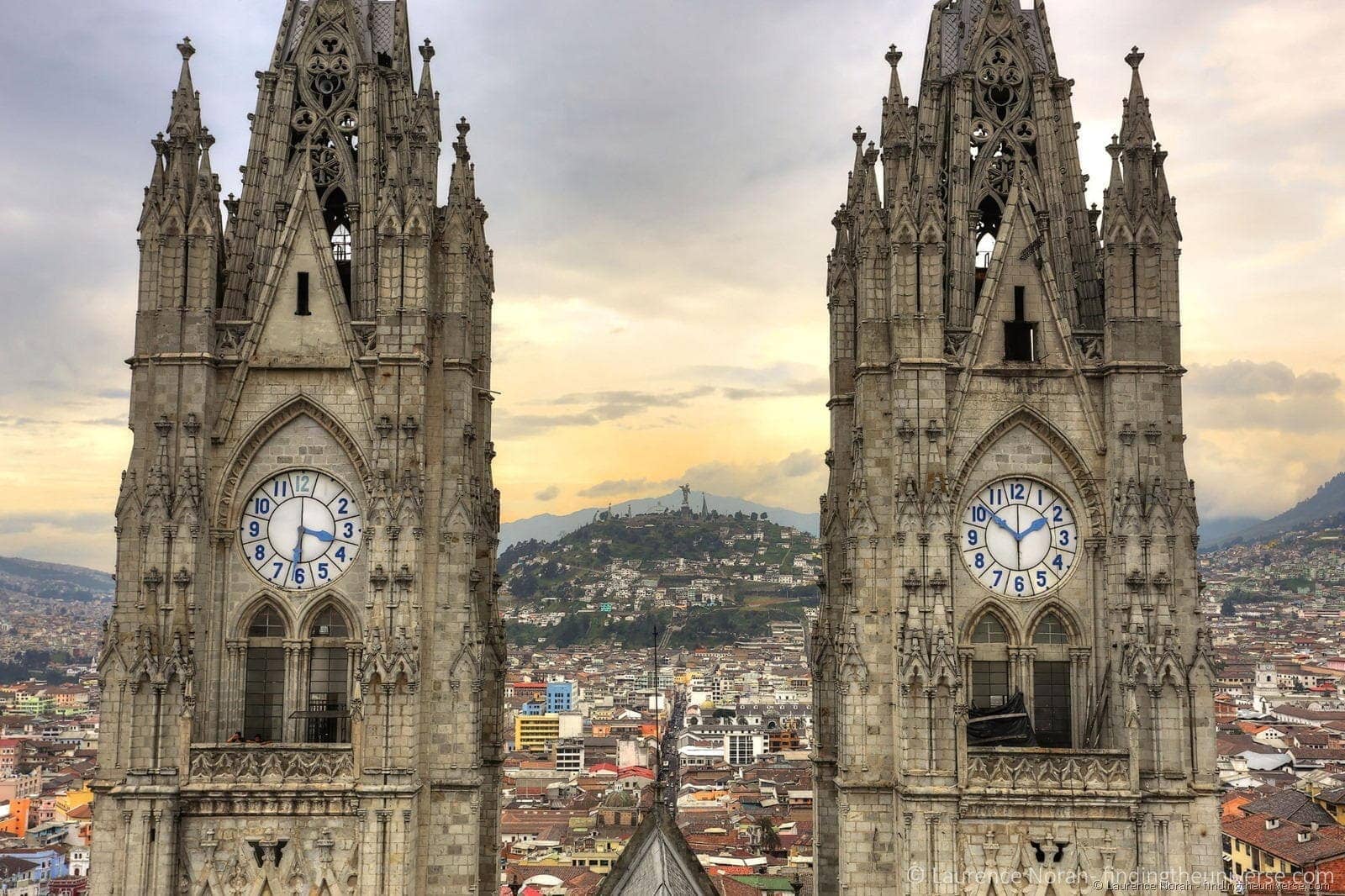
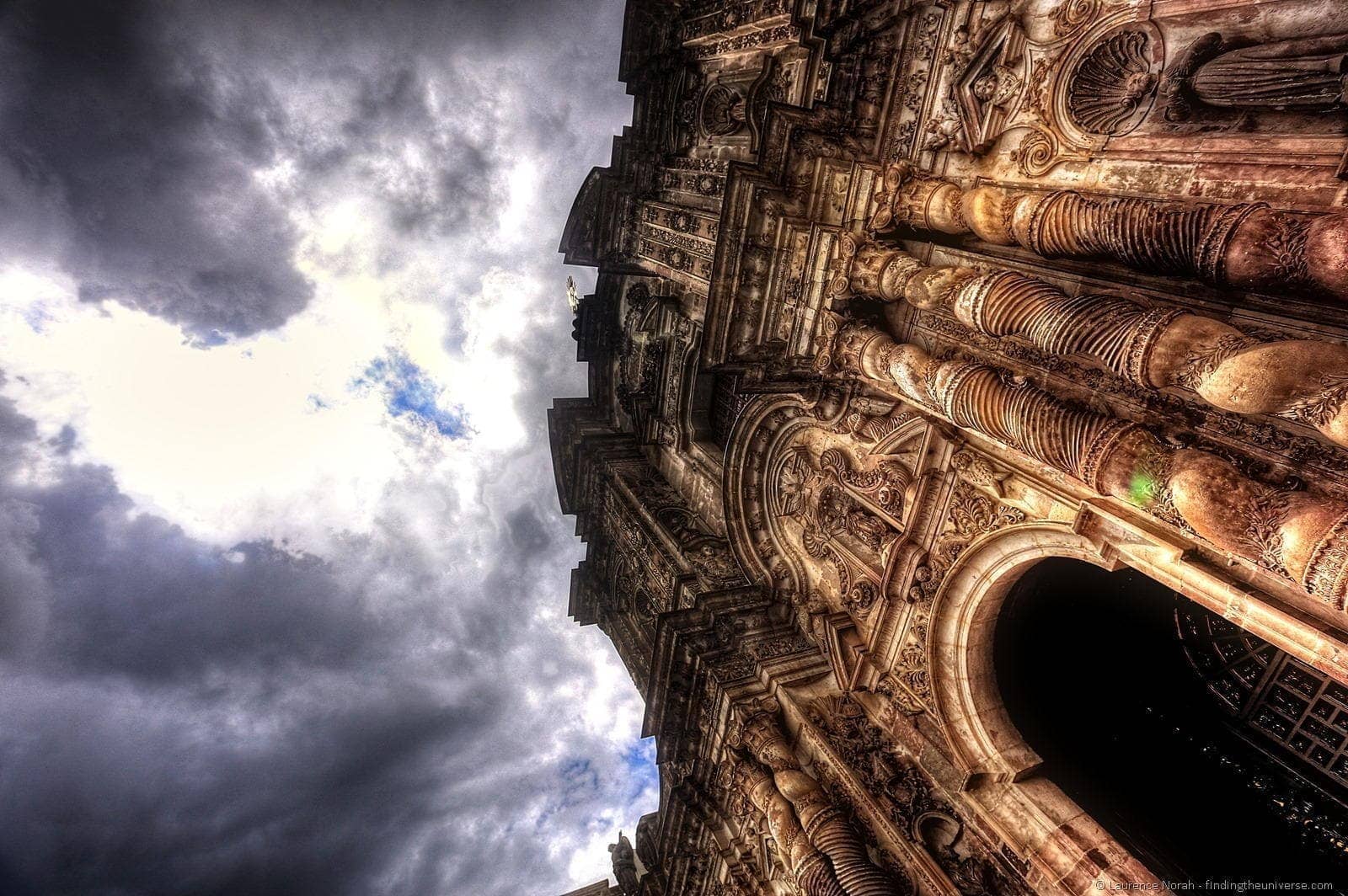
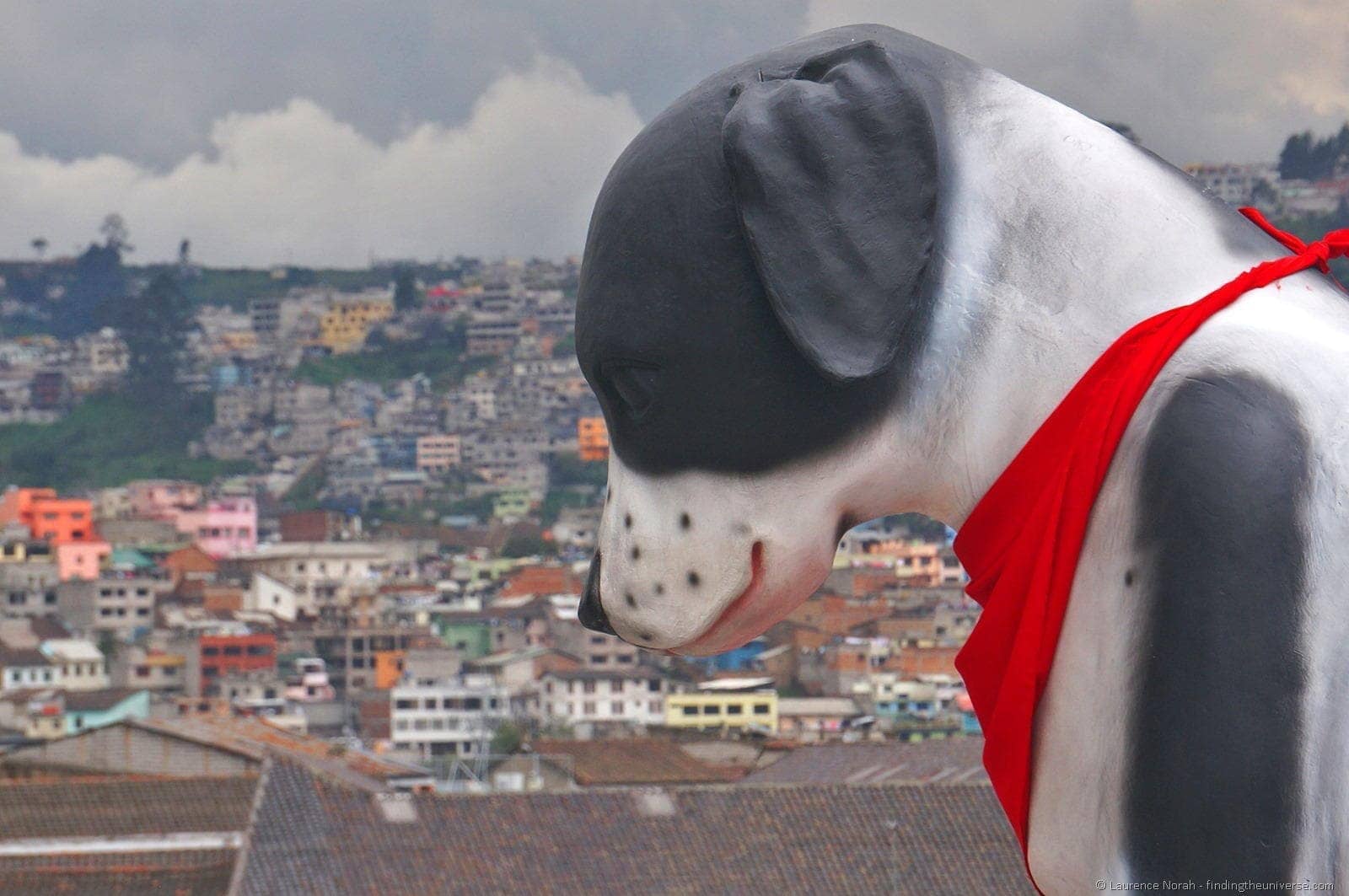
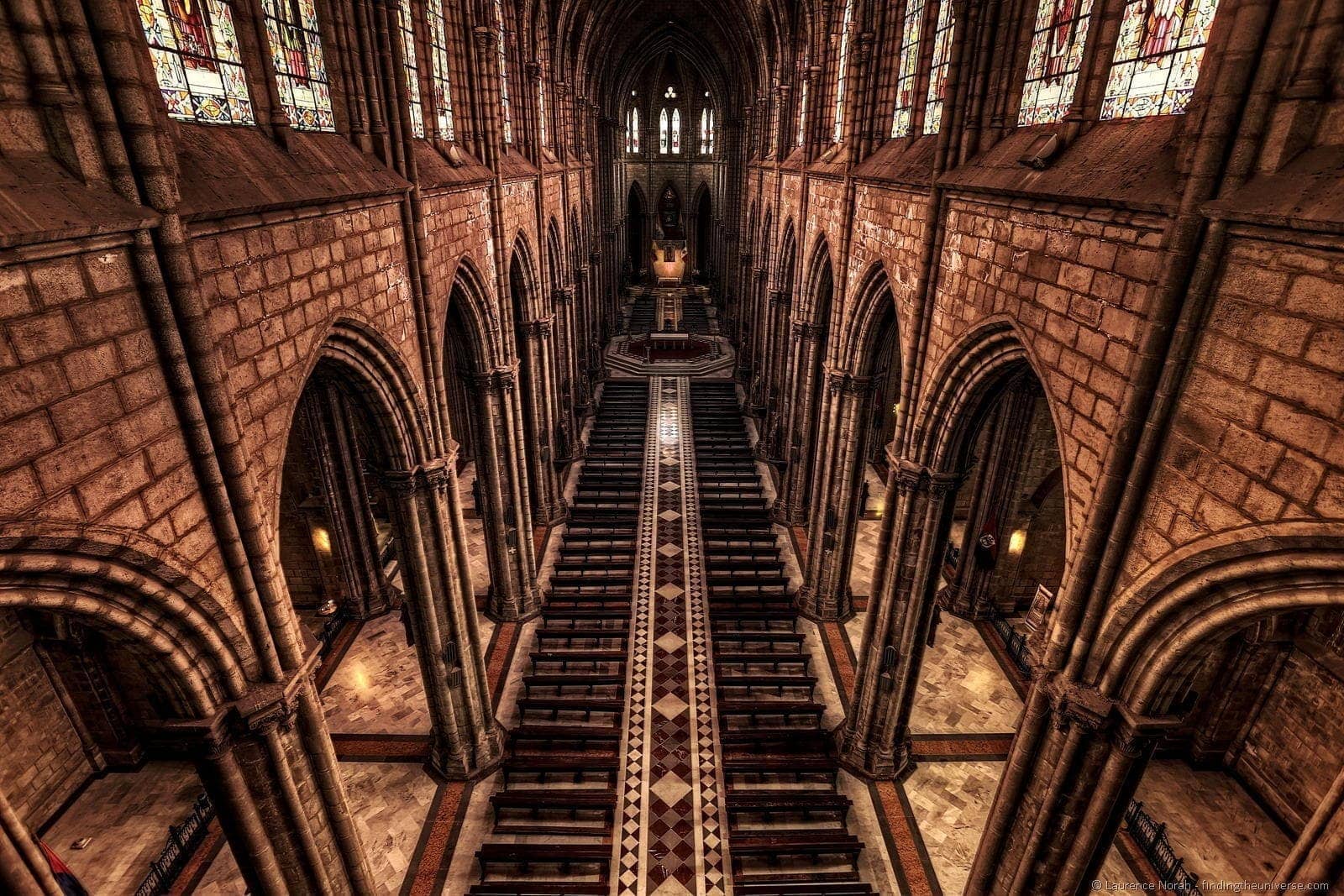
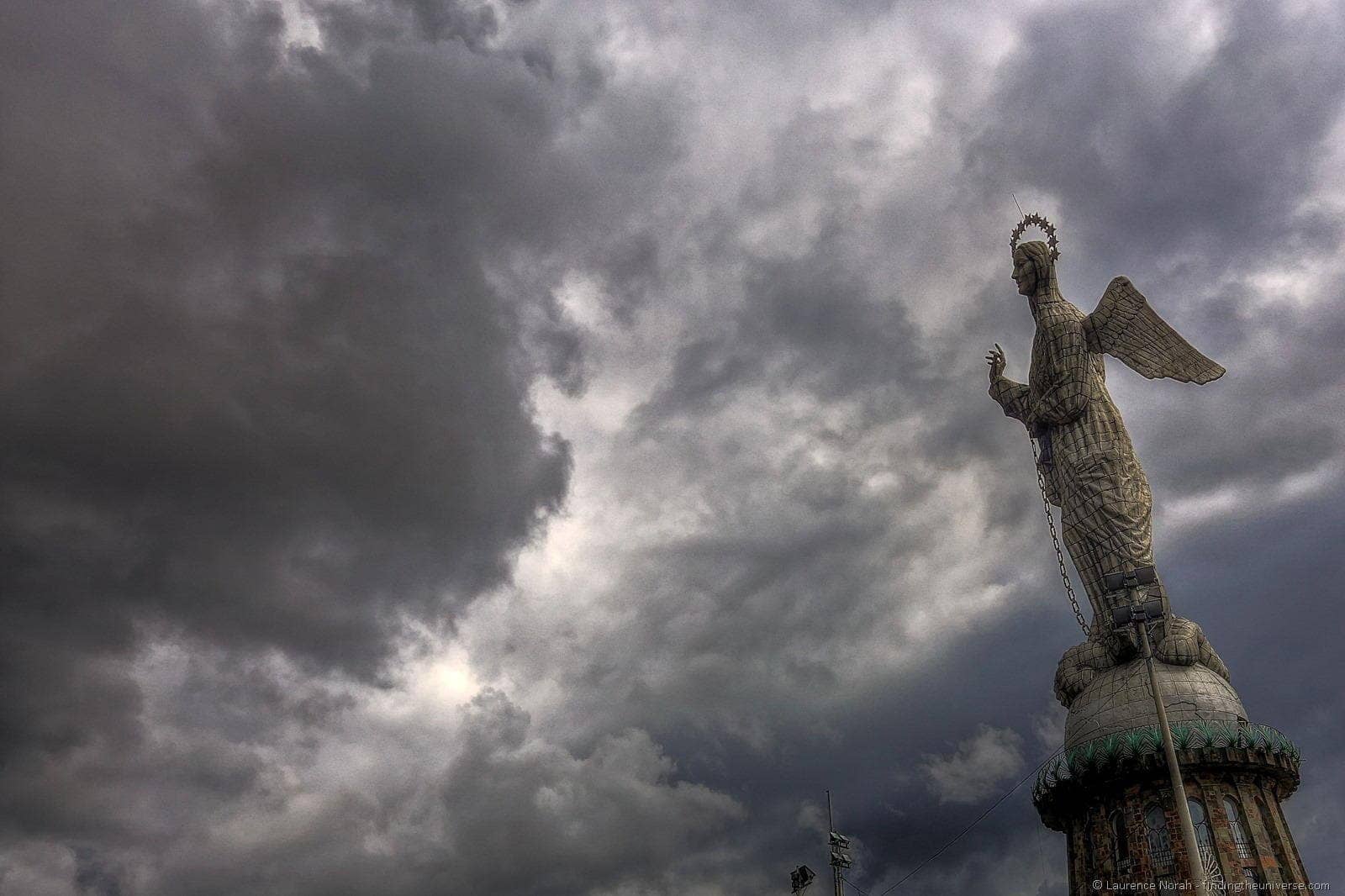
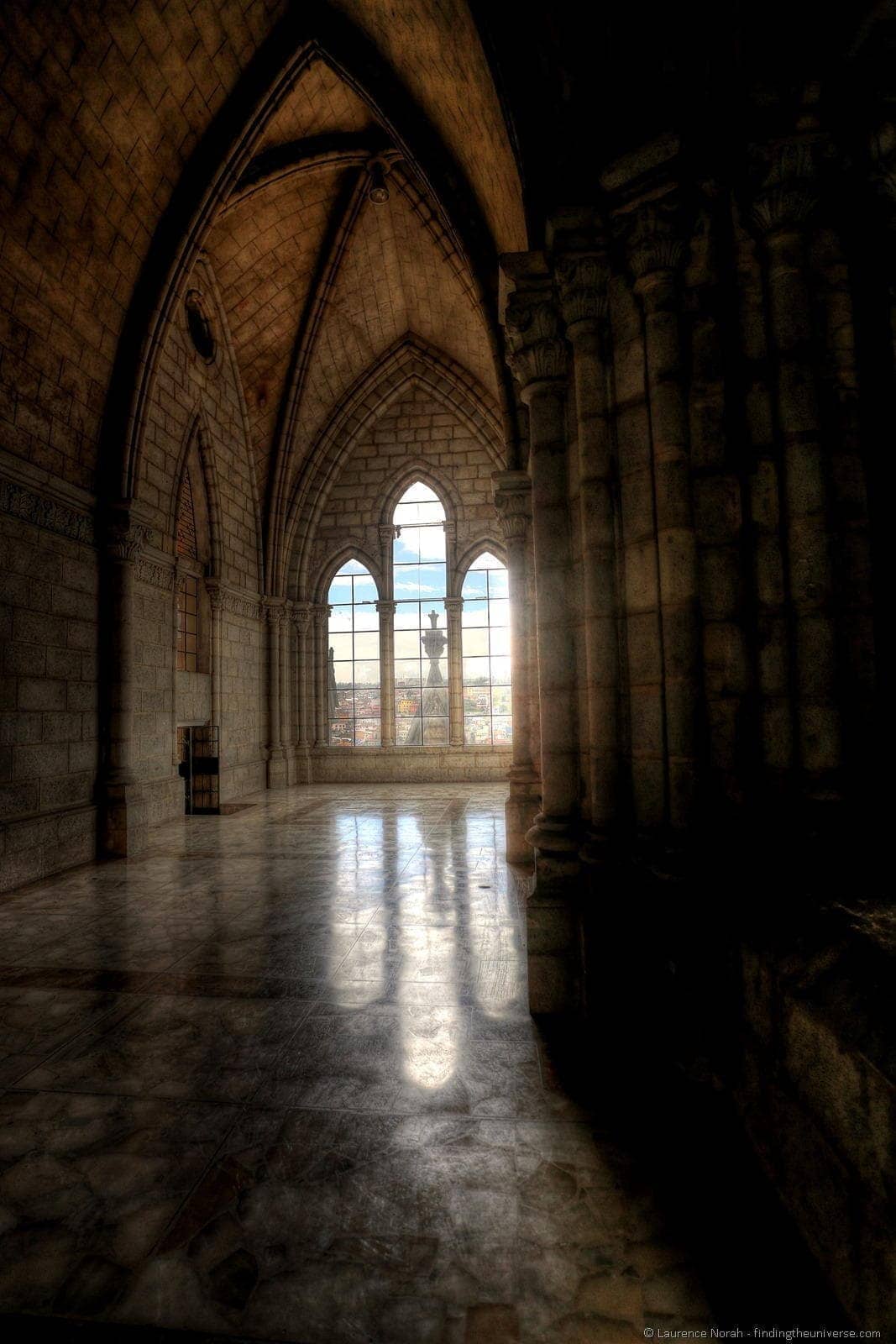
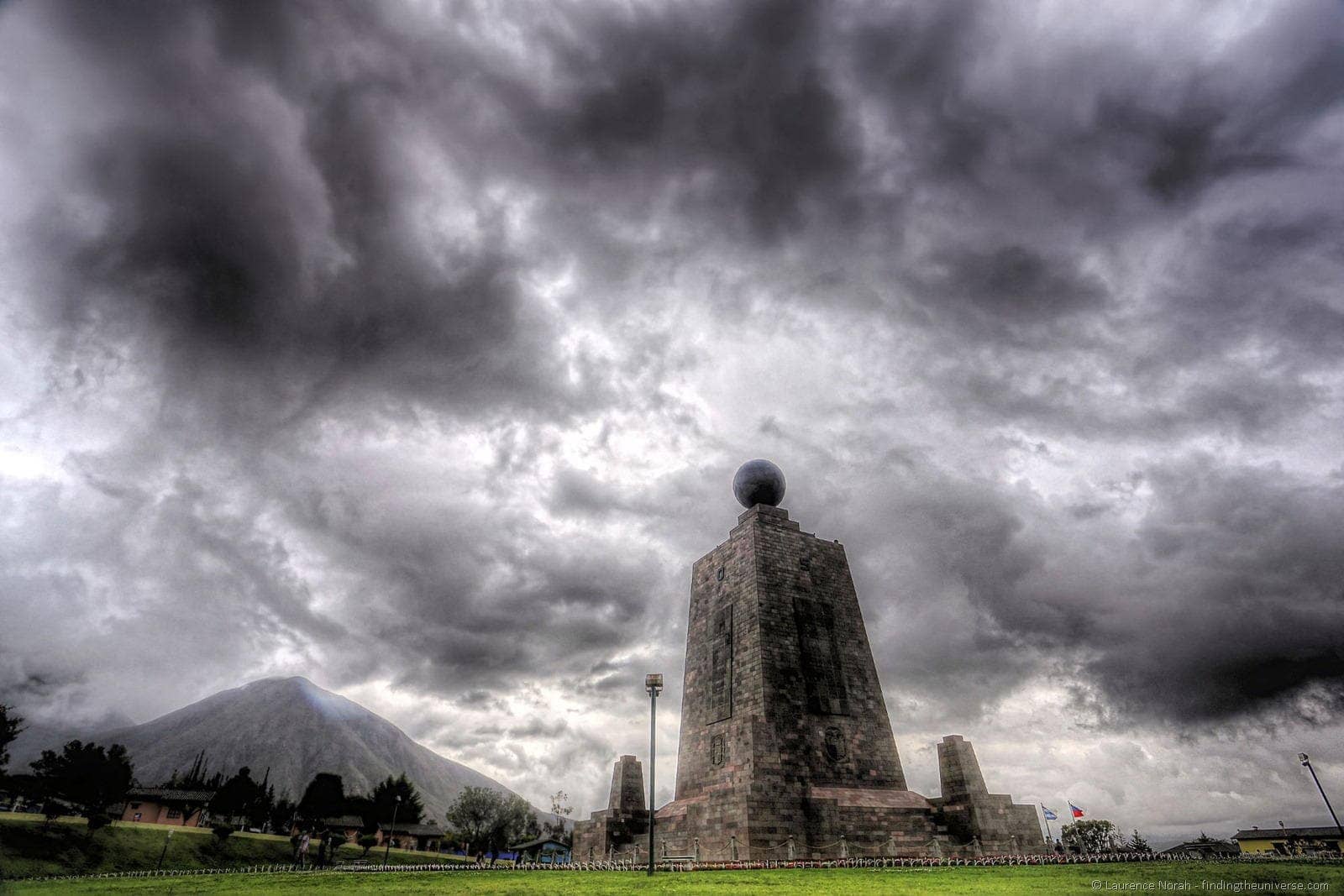

Claudia Luxembourg says
Great post! I have been to Quito too, and it was quite literally breathtaking!